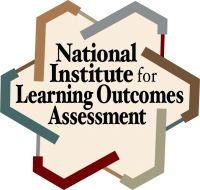Description
Students work in groups of three (sometimes four) to prepare and present a small research project on a topic of interest that is relevant to the course. Once the group selects a topic, each group member will compose and contribute a journal article summary (abstract) using a template provided by the professor. Then, the group will create a PowerPoint presentation of their findings and present it to the class. Maximum presentation time is 10 minutes. The citation and a brief abstract of each group member’s article must be included in the PowerPoint presentation. This assignment is intended to align with the following DQP proficiencies: Intellectual Skills; Use of information resources and communicative fluency; and Applied and Collaborative Learning.
Background and context
This assignment is used in a one-credit freshman seminar, which is a required core course at my institution. The course meets face-to-face, 50 minutes, two days per week, for eight weeks. Typical enrollment is 25 students per section. Most students enroll during their first semester at the university.
Freshman seminar courses are created through a peer review/approval process in which individual faculty members develop a course topic of interest to the faculty member. Students, therefore, have an opportunity to choose the course based on a topic they find interesting. As a result of this process, the faculty member and students of any major share a common interest in the topic of the seminar. This provides mentoring opportunities and relationship building that might not have occurred otherwise. My course focuses on the great outdoors.
While topics vary, each course must address the following core skills: critical thinking, written communication, and personal responsibility. All courses are to include an assignment that requires students to produce a written summary of a book, article, play, film, etc.
Again, these courses are short (16 contact hours in eight weeks). The broad goal is student retention. So, relationship building and engagement with campus resources are emphasized more than academic skill development. Therefore this assignment is intended to be straightforward, collaborative, and enjoyable. If an academic skill deficiency is diagnosed, i.e. poor writing skills, I provide corrective feedback and refer the student to the Writing Center.
Alignment and scaffolding
During the second week, students select research topics and are assigned (based on common interests) to groups. The article summary drafts are due during the fourth week and final versions are due during the 5th week. Student groups present their findings using PowerPoint to the class during the last two weeks of the course (weeks 7 and 8).
Prior to beginning the research, students complete an online information literacy tutorial (multiple modules) created by our professional library staff. Once the group selects a topic, each group member is responsible for retrieving a relevant journal article and composing an article summary (draft and final version) using the Article Summary Instructions and Template (Word Doc posted in Blackboard). Students open the file and compose their individual summary, save it to their computer, and submit it to the professor via Blackboard for feedback and grading. The group then creates a PowerPoint presentation of their findings and presents it to the class. Maximum presentation time is 10 minutes. The citation and a brief summary of each group member’s article must be included in the PowerPoint presentation. Groups are encouraged to add pictures, videos, links to websites, etc. to enhance their presentation. Grades are assigned individually for the summaries and by group for the presentation.
By focusing on core academic skills (use of information resources, communication fluency, and applied and collaborative learning), this assignment provides first-year students an opportunity to practice and improve these skills for use in successive and more advanced course work.
Reflections
I have used this assignment for two years. The assignment has generally produced the results I expected. These core academic skills improve with practice. Consequently, those with previous experience do very well. Scaffolding the assignment (requiring a draft), which I added this year, really helps those with little or no experience. The online library tutorials, the time we spend discussing the assignment, reviewing examples of previous student work, etc. also help students understand and generally meet the expectations of the assignment.
The most common weakness in student work is the quality of the article the students retrieve and summarize. Often the article is not well-aligned with the research topic. If I identify this weakness during my review of the student’s draft, I provide corrective feedback, have them search for a better article, and resubmit another draft.
The students find that working in groups is the most challenging aspect of the assignment. In high school, most group work is conducted during class time. In college and in the case of this assignment, group work is often conducted outside of class. Coordinating schedules, division of labor, and other challenges to collaborative learning must be managed.
In the near future, I plan to add a peer evaluation of the class presentation to the assignment. I plan to guide the class in the development of a presentation rubric that they will use to evaluate their own presentations before they present them and for the class to use when the actual presentation is made.
Please select an option
The assignment library and the assignments within are licensed under a Creative Commons Attribution 4.0 International License. By clicking “Ok” you agree to cite each assignment (including modifications), with the provided citation on the assignments downloaded from this site.
OK

